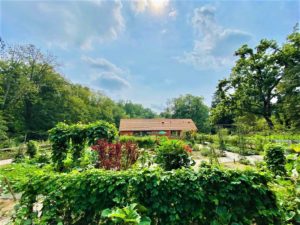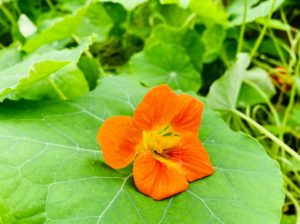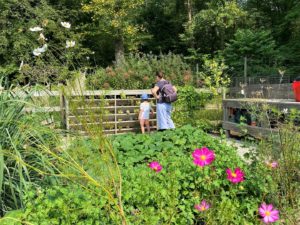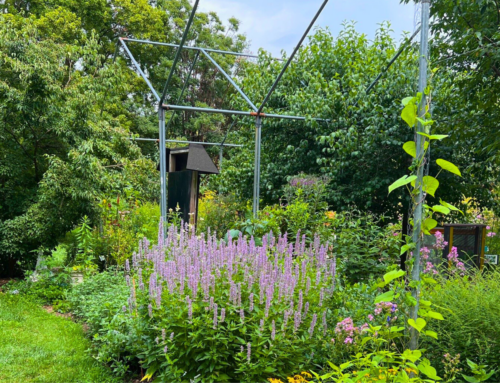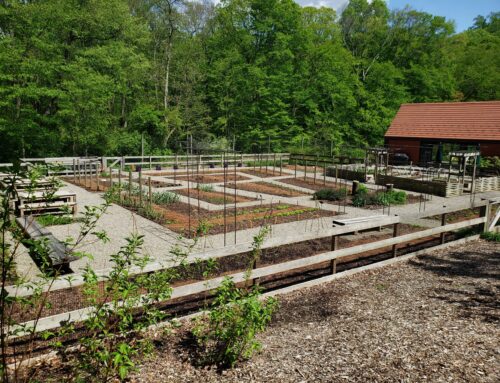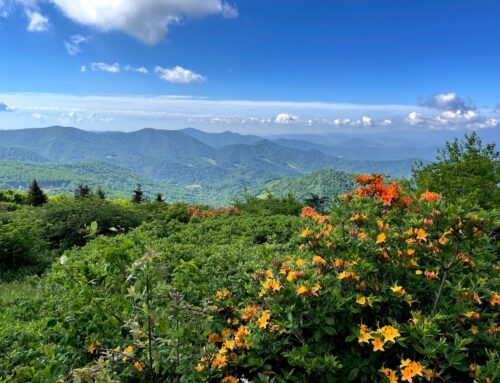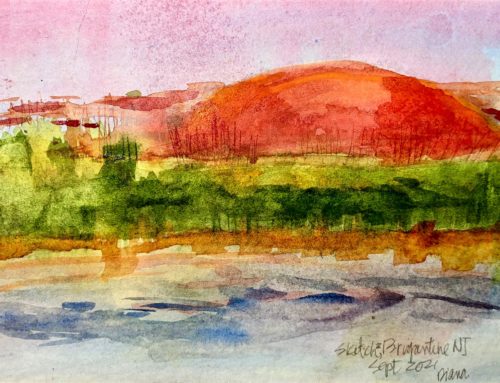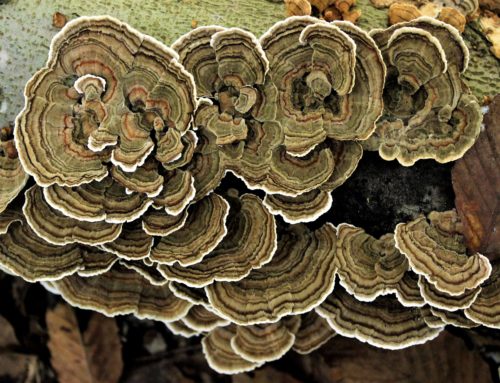I have found that at 7 a.m. you can almost trick yourself into thinking that the day ahead of you will be the sort of day welcomed in May — warm enough that you can shed your layers of sweaters and jackets, but cool enough that a warm cup of tea is not dehydrating. Of course, you can only pull off that trick for so long at the end of August.
I made sure to get down to Lucille’s Garden nice and early today, to try to evade the eventual scorching sun, and water the plants in the cool of the morning. Even though our doors are not yet open to the public, it is bustling down here! The bees are making their rounds on the ‘Striped Japonica’ corn’s tassels, hummingbirds are dunking their beaks into the woodland tobacco flowers, and cabbage worms that escaped my search yesterday are chomping away at the Tuscan kale. Together, they sing the most delicate orchestral song. To my left, I see that the wispy, crepe paper flowers of the ‘Nam Tao Yai’ bottle gourd are reaching to spread open to greet the day, while the foliage of the ‘Jing’ okra stands robust and erect, as its own salute. This is the time of day the garden feels most alive!
This is my time to water, and I work my way around to graze the underbellies of the garden, an activity that lends itself to getting lost in the depths of this ecosystem, in the layered happenings that are making these grounds so productive and enticing.
Perhaps it is because their colors are fading with Autumn’s approach, but today I am fixated on the interwoven patchwork of flowers and their function in this space. A question I am asked quite frequently by visitors is, “Why do you have so many flowers in the edible garden?” I have a bare-bones, concise elevator speech that I tell to the passersby. If you come to visit us at Lucille’s Garden, you may just get a chance to hear it! But, if you are as thirsty as I am to geek out on growing, my elevator speech gets tucked in my back pocket and the longer story unfolds.
Most of the flowers we have growing in Lucille’s Garden are edible themselves, or parts of an edible plant. Chrysanthemum, calendula, hyssop, passionflower, and mullein are commonly found in teas and tinctures. We identify the color of the potato tuber by dots of blue, pink, purple and white blossoms, scattered among their arrow-shaped leaves. Canna tubers contain the starch arrowroot, used to make noodles or to substitute cornstarch. And nasturtiums, of course, add a bright, bold color and a heat-packed spice to any summer salad. But the layers of the benefits of flowers in a veggie garden go deeper!
At this point in the season, we have donated a bounty of nearly 2,000 pounds of food and I can’t help but thank the flowers that have lured the birds, bees, butterflies, moths, and pollinators aplenty to this space! It is widely known in the agricultural world that pollinators can increase crop yield substantially, which is why there is a movement advocating for policy shifts in designating portions of urban and rural properties as habitats for pollinating species. With Lucille’s Garden’s mission rooted in helping to feed the community, it begs the question, “Who are we feeding?” As stewards of the natural world, we see it as our responsibility to cast a wider net and include our environment as an equally valuable piece of that community pie. Pollinating insects rely on nectar and pollen as their food source, so planting flowers with our pollinator friends in mind makes our harvest that much more prolific. Not only are these flowers attracting honey bees and wild bees alike to boost our gardens towards a fruitful, hearty bounty, but they can also help to keep things at bay.
Pests like the aphid and the aforementioned cabbage worm can wreak havoc through their sucking of plant juices and chomping of leaves, as Lucille’s Garden knows well from this spring’s tong ho and cabbage victims. Flowers in the garden help to lure in predatory, or beneficial, insects who will help to keep crop damage in check. A few such flowers include sweet alyssum, milkweed, sunflower, nasturtium, rudbeckia, and zinnia.
And, I must admit, I think the intangible experience of walking through a garden laden with sweet, balmy, dewy, peppery, and, at times, acrid aromas tantalizing the nose, while the eyes absorb the heat cast-off by reds, the life-giving verdurous tones of green, the sweet, smooth clouds of pinks, and the magnetic levity of shades of yellow, is unmatched by many.
It is late summer. The time when the ephemeral is tangible, and the season’s end is close enough for me to breathe in what is beloved about this time of year. Bulam squash are bursting at their seams, with daily fruits hiding beneath undulating leaves. The katsura trees are omitting their intoxicating aroma of burnt sugar. Goldenrod is just beginning to show a yellow tinge to its verdant buds. Anise hyssop is providing pit stops for the bees, while cosmos, lantana and zinnias look like candy in between. In just a few weeks, birds will come to feast upon the heads of monarda and echinacea, undoubtedly depositing new seeds, scattered across their flight path. They will help create the most beautiful kind of garden, one that continues the cycle of life, serves as a refuge and source for food, all while letting us marvel at the bounty that abounds!
The sprinkler has caught me in its path, pulling me back to the moment. And I, like the bees, continue on with the motions of a day, fueled by the secret of a 7 a.m. garden.
Come say hi sometime!


